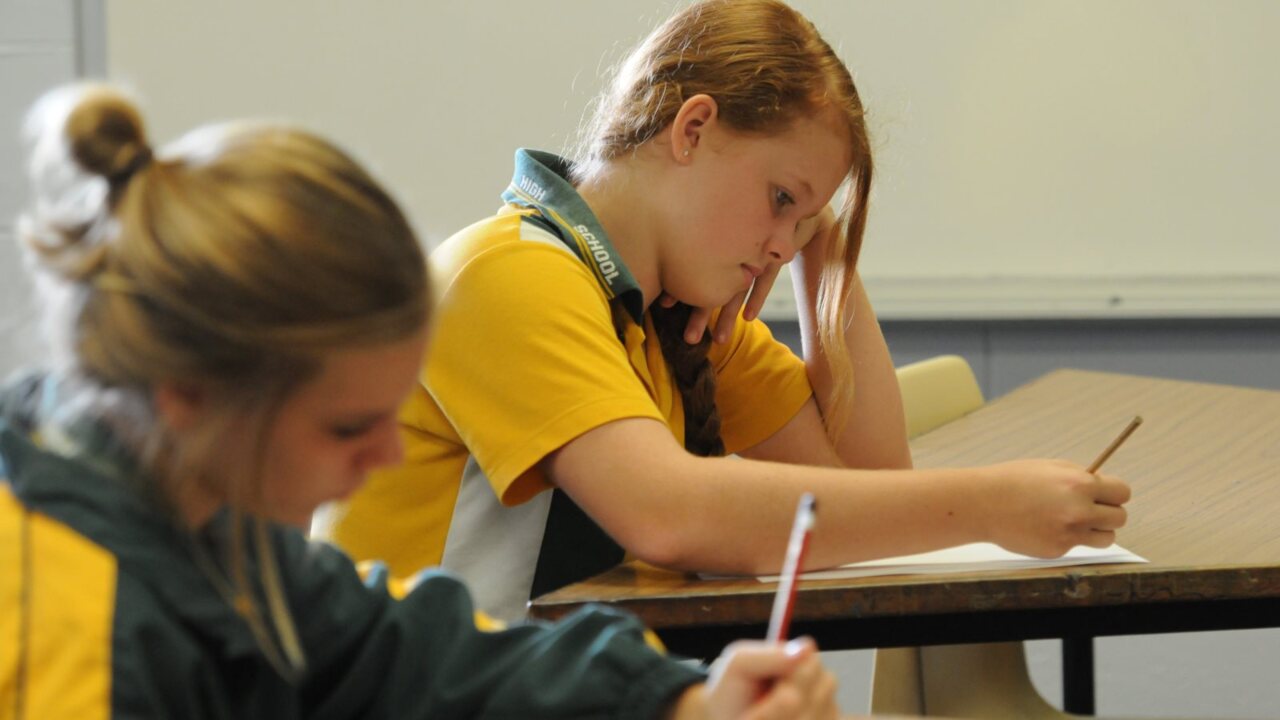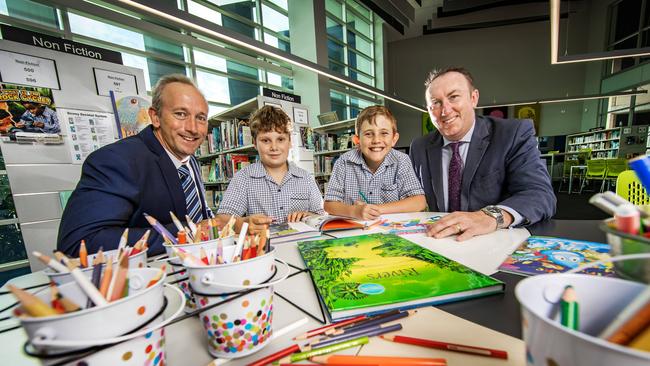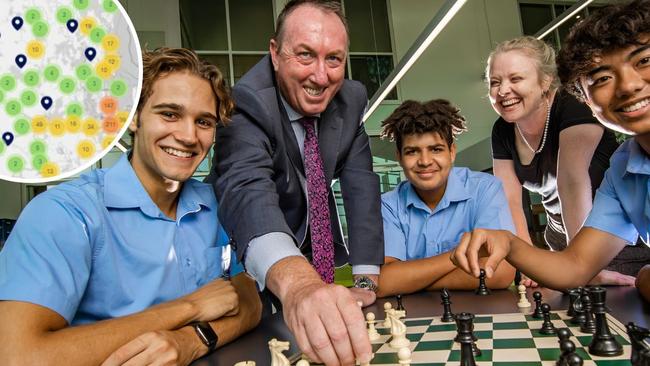Teacher-student ratios: How every Queensland school class compares
More than half of all Queensland schools have student-teacher ratios worse than the national average, in-depth analysis reveals. See how your school compares. SEARCH FOR YOUR SCHOOL

Logan
Don't miss out on the headlines from Logan. Followed categories will be added to My News.
More than half of Queensland schools have student-teacher ratios worse than the national average, with more state schools than private schools falling below the mark.
In total, 894 Queensland schools had worse ratios than the Australian Bureau of Statistics’ national average of 13.3. The majority of these schools are public institutions.
The worst school was Charters Towers’ School of Distance Education with 27.4, followed by the Cairns School of Distance Education with 27.3, and Pinnacle Academic College in Kallangur in the Moreton region with 24.2.
The ratios were calculated using 2021 ACARA MySchool data. The total student enrolments were divided by total Full Time Equivalent Teachers to calculate the ratios.
Moreton Bay Boys’ College in Manly West recorded an impressive ratio of 10.2.
Principal Andrew Holmes said he was “delighted” to be in charge of a leading school.
“We continue to review our academic offerings and are focused on providing pathways and catering to our students’ individual learning needs. We know smaller class sizes allow students to be independent learners, to be curious, and to be inspired,” he said.
Hundreds of schools who had better ratios than the country’s norm are classified as either “micro” or “small” institutions – as expected.

However, the majority of Brisbane’s elite private schools beat the national average, but notable schools who didn’t were Villanova College in Coorparoo, Genesis Christian College at Bray Park, King’s Christian College in Reedy Creek, and St Rita’s College in Clayfield.
The best-performing medium and large schools were led by the state secondary Queensland Academy for Creative Industries at Kelvin Grove in Brisbane with a ratio of 8.4.
Clayfield College led Brisbane’s prestigious private schools with 8.5, while Mt Maria College at Petrie came in with an impressive 9.5.
In terms of Brisbane public schools, Mitchelton State High School set the bar with 9.2, followed by large public school Somerset Hills State School at Stafford Heights with 9.3.
Further afield, Thursday Island off Far North Queensland had two good results with Tagai State College recording 9.7, and Catholic primary Our Lady of the Sacred Heart having 9.5.
Good Shepherd Catholic College in Mount Isa in North West Queensland achieved a ratio of 8.7, while St Ursula’s College in Toowoomba finished with 8.9.

University of Southern Queensland senior education lecturer Dr Tania Leach said student ratio and classroom sizes is a highly contested discussion globally.
Dr Leach said recent international research showed that schools with smaller ratio classes had a more positive impact on the long-term education outcomes of students.
She said these students typically had a greater high school completion rate and a higher likelihood of continuing their education post-school.
“Students are more likely to complete school and progress into formal post school studies, which include internships, TAFE and university study, this in turn means smaller teacher student ratios can positively impact on the life trajectory of each student,” Dr Leach said.
However, Dr Leach said there are other factors involved as well – students with special needs and the sheer cost of education amid a teacher shortage.
“While the educational impacts of smaller teacher student ratios are known, staffing models and policy decisions tend to prioritise an economic perspective which means that sometimes the cost of smaller teacher student ratios is too high to implement,” Dr Leach said.
More Coverage
Originally published as Teacher-student ratios: How every Queensland school class compares




